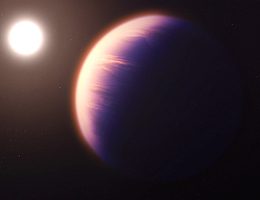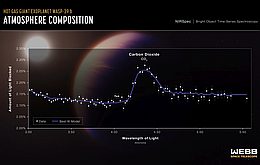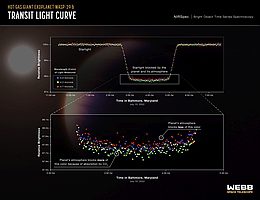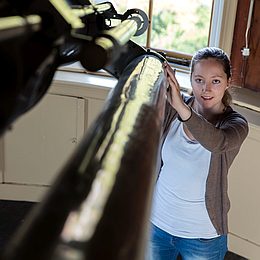The James Webb Space Telescope immediately provided a sense of the first scientific finding: for the first time, carbon dioxide could be detected in the atmosphere of a planet outside the solar system.2 It is clearly explained. Researchers from the University of Bern and Geneva and the National Center for Competence in Research (NCCR) PlanetS are participating in the study. Media statement from the University of Bern.
Source: University of Bern, August 25, 2022.

August 25, 2022 – Due to its role in regulating climate, carbon dioxide is a central component of Earth’s atmosphere. Being able to clearly detect the molecule in the atmospheres of distant exoplanets is an essential step in the search for habitable worlds. This is exactly what an international team of researchers, with participation from the University of Bern, the University of Geneva and the National Center for Competence in Research (NCCR) PlanetS, has achieved thanks to observations using the James Webb Space Telescope.

The telescope is jointly owned by the European Space Agency ESAUS space agency NASAand the Canadian Space Agency CSA She began her scientific work in June 2022. The first results are now being published in the journal Nature.
A puffy gas giant filtering starlight
Universe wasp-39b is a hot gas giant orbiting a Sun-like star 700 light-years from Earth. Unlike the gas giants that revolve in our solar system wasp-39b orbits its star in a narrow orbit – only about one-eighth of the distance between the Sun and Mercury – and takes just over four Earth days to complete one orbit. Due to the intense solar radiation, the planet is heated to about 900 ° C. Heat causes the planet’s atmosphere to expand, and this is what happens waspMonica Lindell, co-author of the study, professor of astronomy at the University of Geneva and a member of NCCR PlanetS explains.

When a planet passes directly in front of its star, some starlight shines through the planet’s atmosphere before it reaches the telescope. “The atmosphere filters out some colors more than others, depending on its composition, how dense it is, and whether or not there are clouds in it,” Lindell says. Using the James Webb Telescope, researchers can split the light into its colors in order to identify the distinctive “fingerprints” of different gases and determine the composition of the atmosphere.

The first clear discovery of carbon dioxide on an exoplanet
Using the Webb Telescope’s Near Infrared Spectrometer (NIRSpec), the team of researchers was able to take fingerprints of carbon dioxide in the light that reflects off the atmosphere. waspPass -39 b. “From the first look at the data, it was clear that we were dealing with an astonishing discovery,” says Dominique Petit de Laroche, a researcher at the University of Geneva, co-author of the study and a member of NCCR PlanetS. For the first time, carbon dioxide has been clearly detected on a planet outside the solar system.
«The discovery of such a clear signal of carbon dioxide wasp-39 b is a good sign. Both are for detecting the atmospheres on smaller Earth-sized planets and for measuring the abundance of other gases such as water and methane, said Natalie Batalha of the University of California, Santa Cruz, who led the international research team that made the observations.

Understanding the composition of the planet’s atmosphere also provides insight into the origin and evolution of the planet. “Co2 particles are good indicators of the formation history of planets,” says Elsbeth Lee, co-author of the study, Ambizione Fellow at the University of Bern and a member of NCCR PlanetS.
« Clear detection of carbon dioxide in wasp-39b gives us information about the inventory of carbon and oxygen molecules in the atmosphere. This gives us an idea of the diverse chemical processes that occur in the atmosphere under these extreme conditions, as well as possible rocks and gaseous materials that the planet may have ingested during its formation stages.”

Early launch flag
NIRSpec note for wasp-39b is just part of a large observational project with the James Webb Telescope, which will include more observations about wasp-39b plus observations from two other planets. The observations are part of the so-called Early Publication Science Programme, which has been developed to make scientific data from the James Webb Telescope available to the international research community as quickly as possible, thus ensuring the best possible scientific use of the space telescope.
Information about the publication
JWST Transiting exoplanet community early launch science team: Identification of carbon dioxide in the atmosphere of an exoplanet, accepted for publication in Nature https://arxiv.org/abs/2208.11692
Join the discussion on the Raumcon forum:

“Social media evangelist. Baconaholic. Devoted reader. Twitter scholar. Avid coffee trailblazer.”







More Stories
Longest jets in the universe discovered – giant particle streams as long as 140 Milky Way galaxies in a row
New method reveals 307 supernova remnants
Snapchat is upping the ante on augmented reality glasses